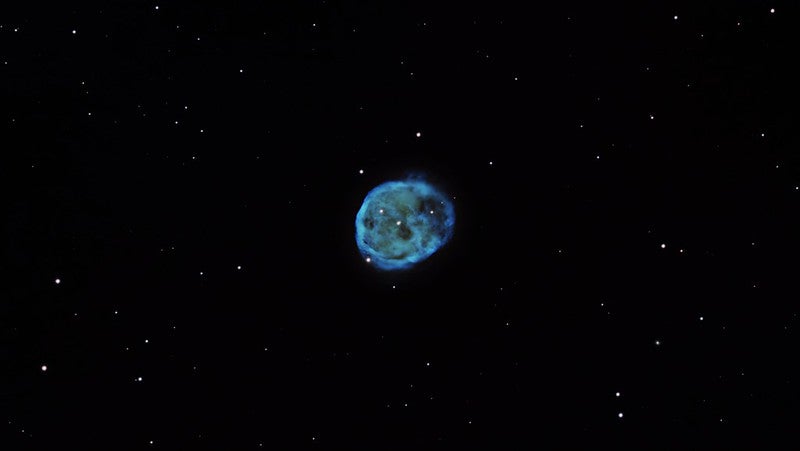
Many constellations are well-known for having one very special deep-sky object within their borders, something so famous that when you read or hear that constellation’s name, you instantly think of it, like an astronomical word association game. Orion? The Orion Nebula! Andromeda? The Andromeda Galaxy, of course! Lyra? Easy — the Ring Nebula. And Perseus? Has to be the Double Cluster, right?
But not all constellations have such a claim to fame. Many constellations are not home to a particularly striking or beautiful nebula, sparkly star cluster, or swirly galaxy, and so they are often overlooked — like impatient tourists, observers drift through or past them on their way to more exciting destinations. These are the shy constellations, the ones that hide in a corner of the living room during a star party, concealed behind a potted plant or next to the fish tank, talking to the dog while all the other, more confident, less socially awkward constellations dance together or hang out in the kitchen, laughing and joking while they eat all the pizza and nibbles.
But just because a constellation doesn’t have a celebrity feature doesn’t mean there’s nothing to see in it. Every constellation has something within its borders worth tracking down, if you just look hard enough — like these “shy five” deep-sky gems:
CETUS: The Skull Nebula, NGC 246
Also known as the Skull Nebula, NGC 246 is a planetary nebula roughly 1,600 light-years from Earth. It is also known by some observers as the Pac-Man Nebula because of the similarity of its shape to the greedy gobbling video game character, but don’t confuse NGC 246 with either the other Pac-Man Nebula (NGC 281) or the much bigger and brighter Rosette Nebula (NGC 2337), which is also known as “the Skull” by some.
With a magnitude around 11, NGC 246 is one of the faintest planetaries in the sky. Although it can be seen with smaller instruments from dark-sky sites, this nebula really needs a 6-inch telescope or larger to be seen properly: as a disk-shaped, slightly mottled haze with foreground stars scattered across it.
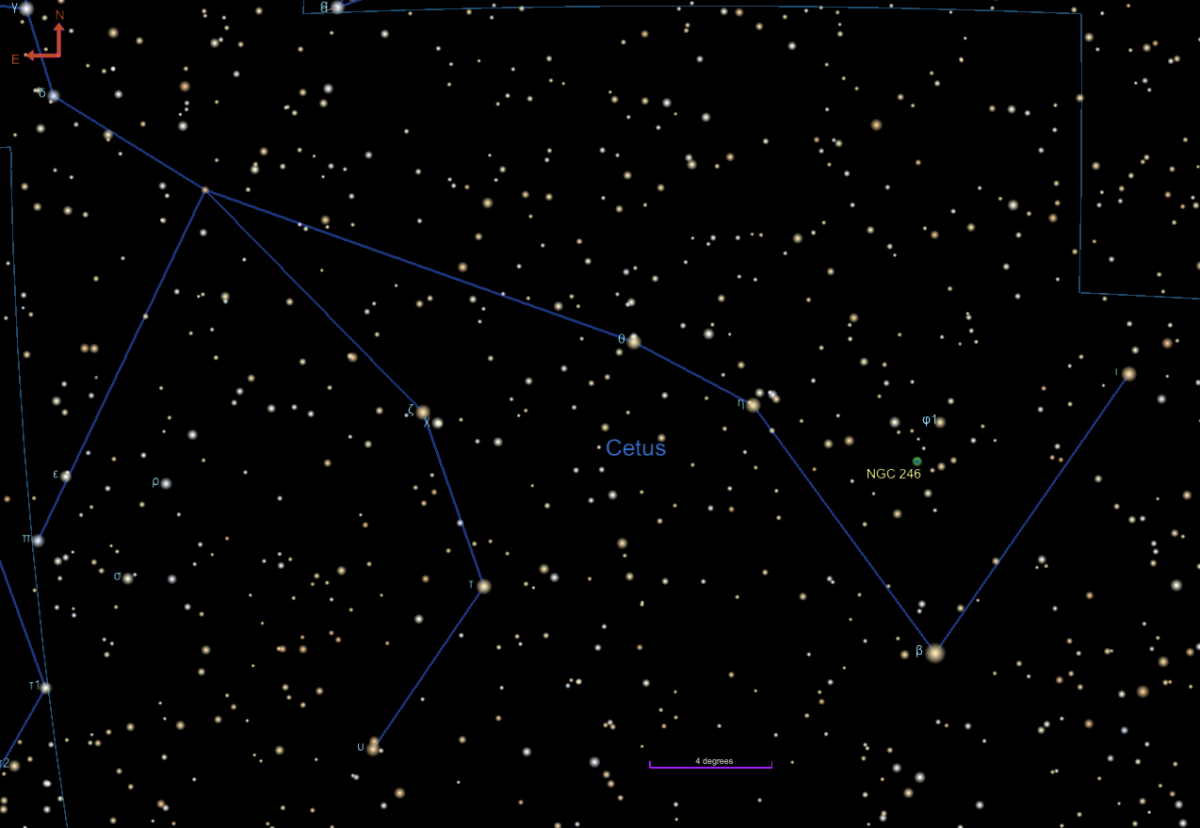
ARIES: NGC 772, a beautiful galaxy
Let’s be honest, there’s not much to see in Aries. It’s the sky equivalent of a remote country town that you drive past on your way to somewhere more interesting. But if you park and wander around, you will come across NGC 772 — a pretty, 10th-magnitude spiral galaxy approximately 130 million light-years away.
With a diameter of approximately 250,000 light years, NGC 772 is larger than our own Milky Way. Long exposure images show the galaxy’s spiral arms are warped and distorted by nearby dwarf galaxies, but the arms are very faint visually and you’ll only see the bright core unless you’re using a large-aperture instrument.
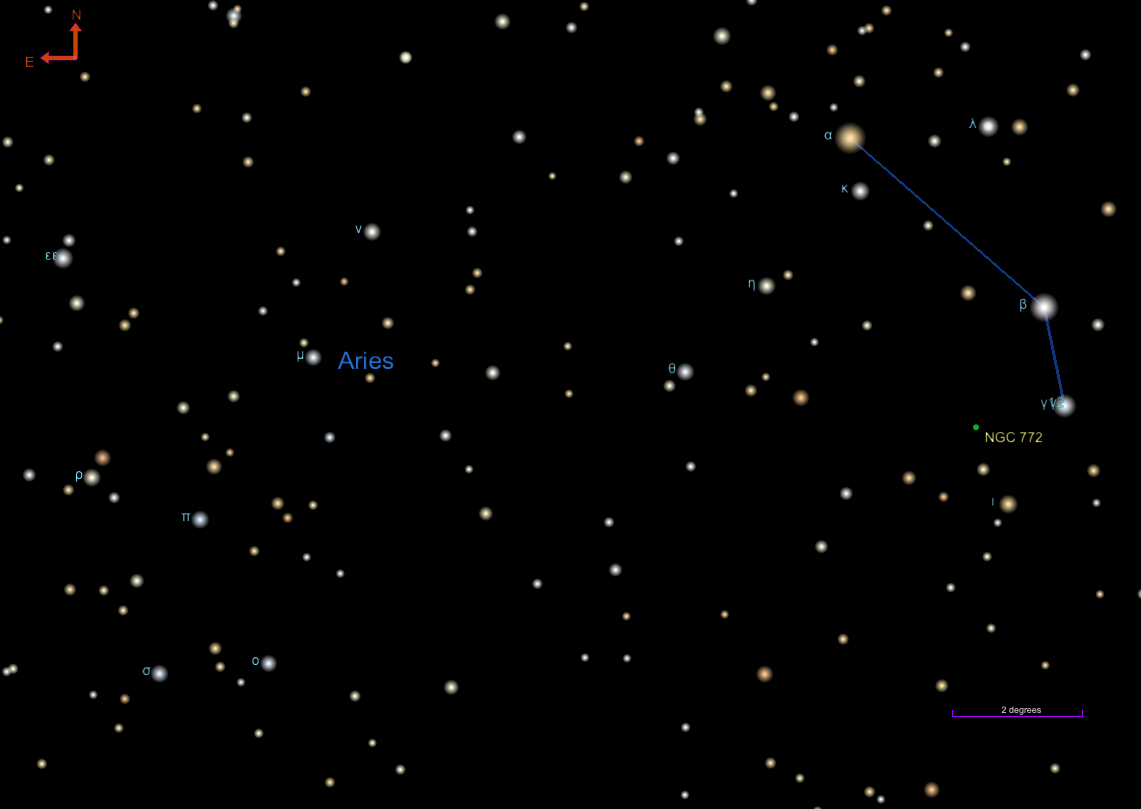
CAMELOPARDALIS: IC 342, another lovely galaxy
One of the very shyest constellations, Camelopardalis the Giraffe (hand up if you had forgotten there’s even a giraffe in the sky!) is rather lacking in deep-sky objects, although many observers are drawn to the galaxy NGC 2403, which lies near the Giraffe’s mouth. But halfway along the Giraffe’s back is another deep-sky object that is shamefully overlooked and neglected by observers.
IC 342 is a magnitude 8.4 spiral galaxy that is relatively close to us, somewhere between 7 million and 11 million light-years away. It can be seen with binoculars as a surprisingly large hazy patch, very similar to much more famous M33, and telescopes easily pick out its tightly wound spiral arms. So, why is it not better known? Perhaps the same reason it is called the Hidden Galaxy: Because unfortunately, IC 342 lies behind a very dusty part of our own Milky Way, so our view of it is rather ruined. If it was elsewhere in the sky, IC 342 would be a lovely sight, easily visible to the naked eye.
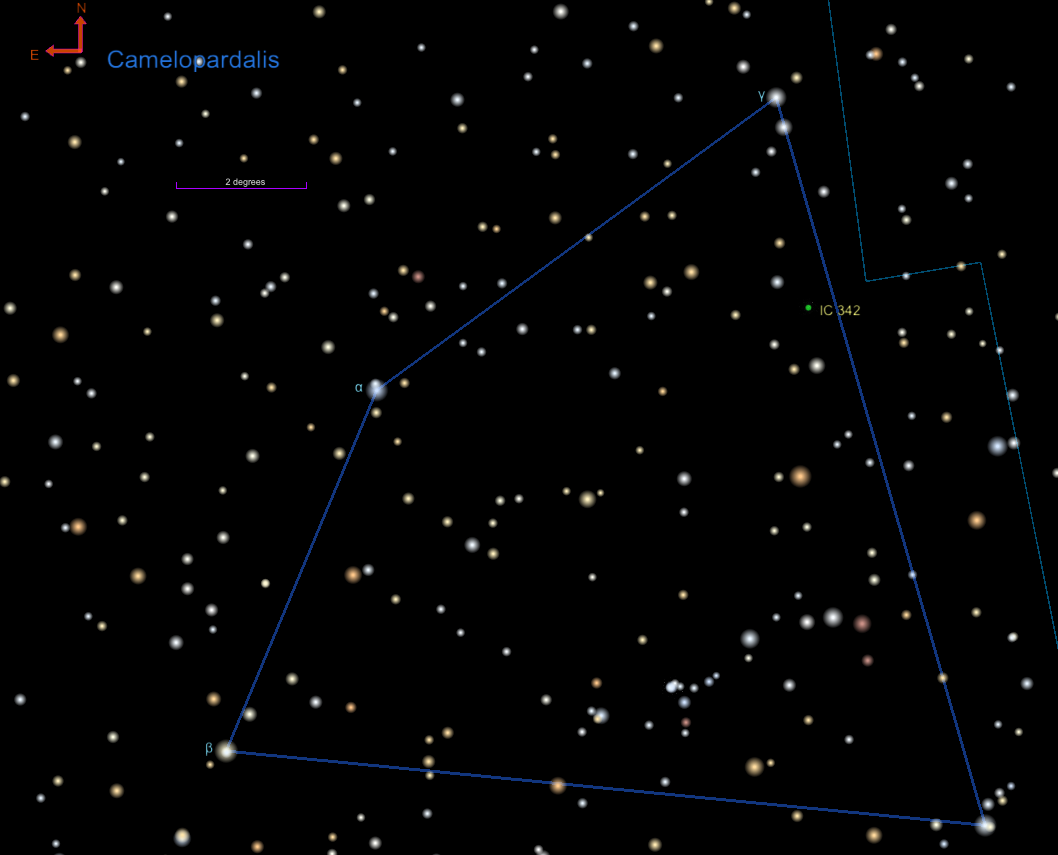
LYNX: The Intergalactic Wanderer globular cluster, NGC 2419
While lynx are beautiful creatures in real life, the constellation Lynx, sandwiched between the Great Bear and the Twins, is an unremarkable spray of faint stars. However, it contains something definitely worth hunting down. Globular cluster NGC 2419 was discovered by William Herschel on the last day of 1788. Overshadowed by brighter, more famous globulars such as M13 and Omega Centauri, NGC 2419 is a respectable 10th magnitude, meaning it can be seen easily in small telescopes as a smoky spot.
Globular clusters famously orbit galaxies like moths fluttering around streetlights, but astronomers once thought that NGC 2419 didn’t orbit the Milky Way and was instead some sort of rogue cluster. It was even nicknamed the Intergalactic Wanderer. We now know that it does belong to our galaxy, sometimes passing beyond the Magellanic Clouds during its 3-billion-year-long orbit.
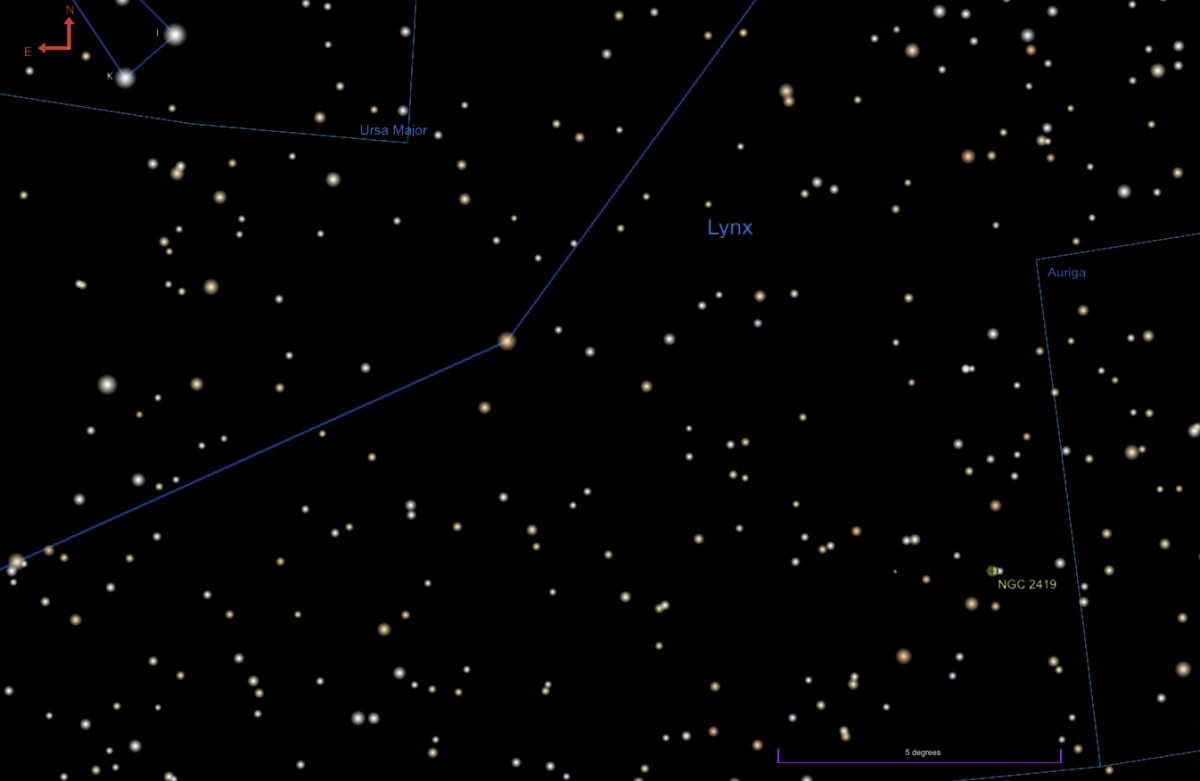
SAGITTA: Globular cluster M71
If we could somehow switch on the “artwork” of the sky for real, like we can on a phone app or computer program, we would see an arrow lying at the paws of Vulpecula the Fox. This is Sagitta, and its main purpose seems to be to guide observers to the famous Dumbbell Nebula (M27), which lies just north of its sharp point. But Sagitta contains an overlooked Messier object of its own: M71, a globular cluster 13,000 light-years away. M71 is a loose globular cluster, meaning its stars are less densely packed than those in more well-known globulars. In fact, it probably looks more like M44 (the Beehive open cluster) than M13 (the famous Hercules globular cluster). A dark notch cut out of its western side is very obvious under high magnification.
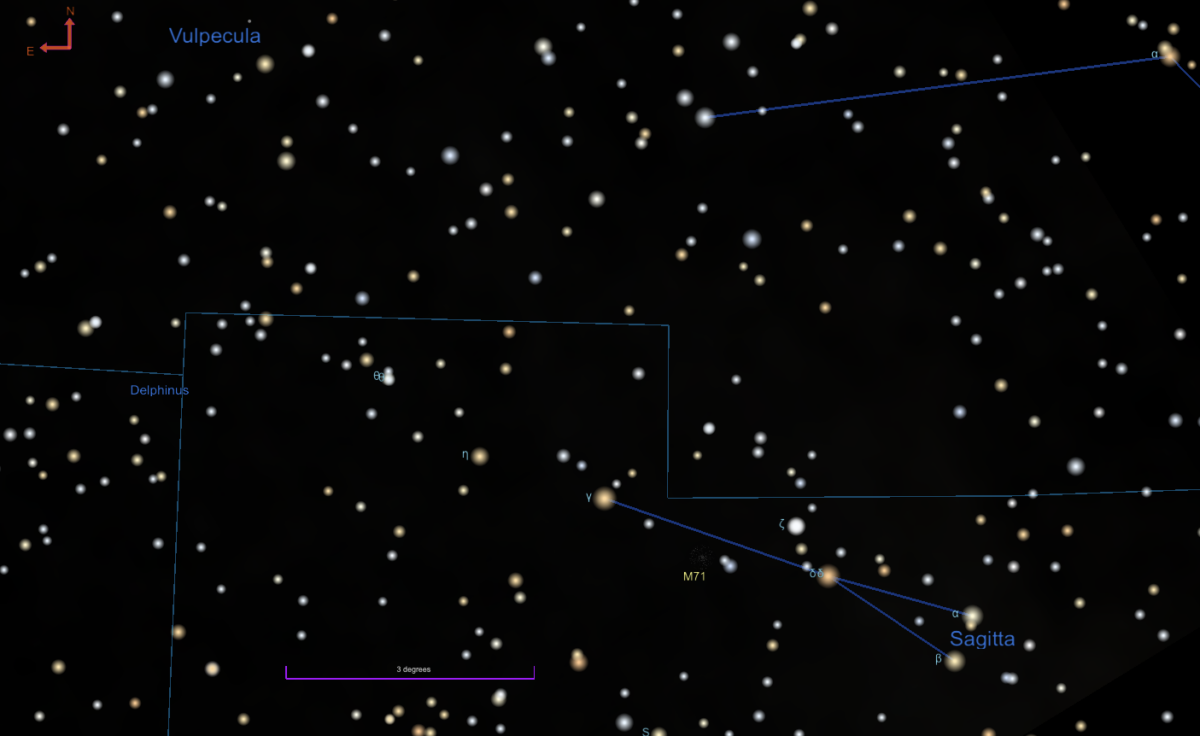
These are just five objects that are overlooked in the sky. There are many, many more. So, the next time you head out on a clear night and point your telescope toward the stars, don’t swing it straight to your favorite objects — the brash ones that shout, “Look at me!” Ignore them. They’re going nowhere. Give the shy deep-sky objects a chance to tell you their stories for a change.

